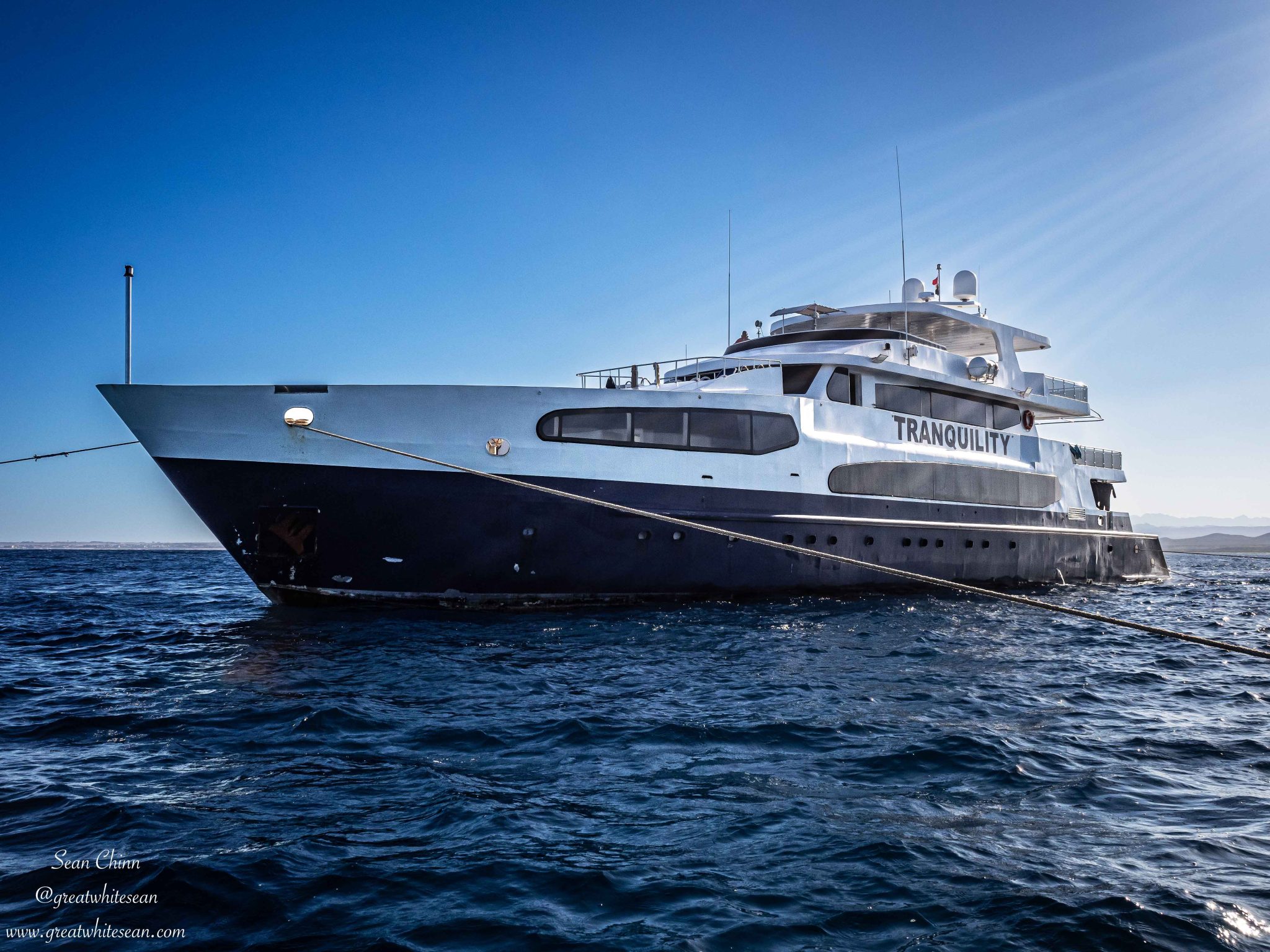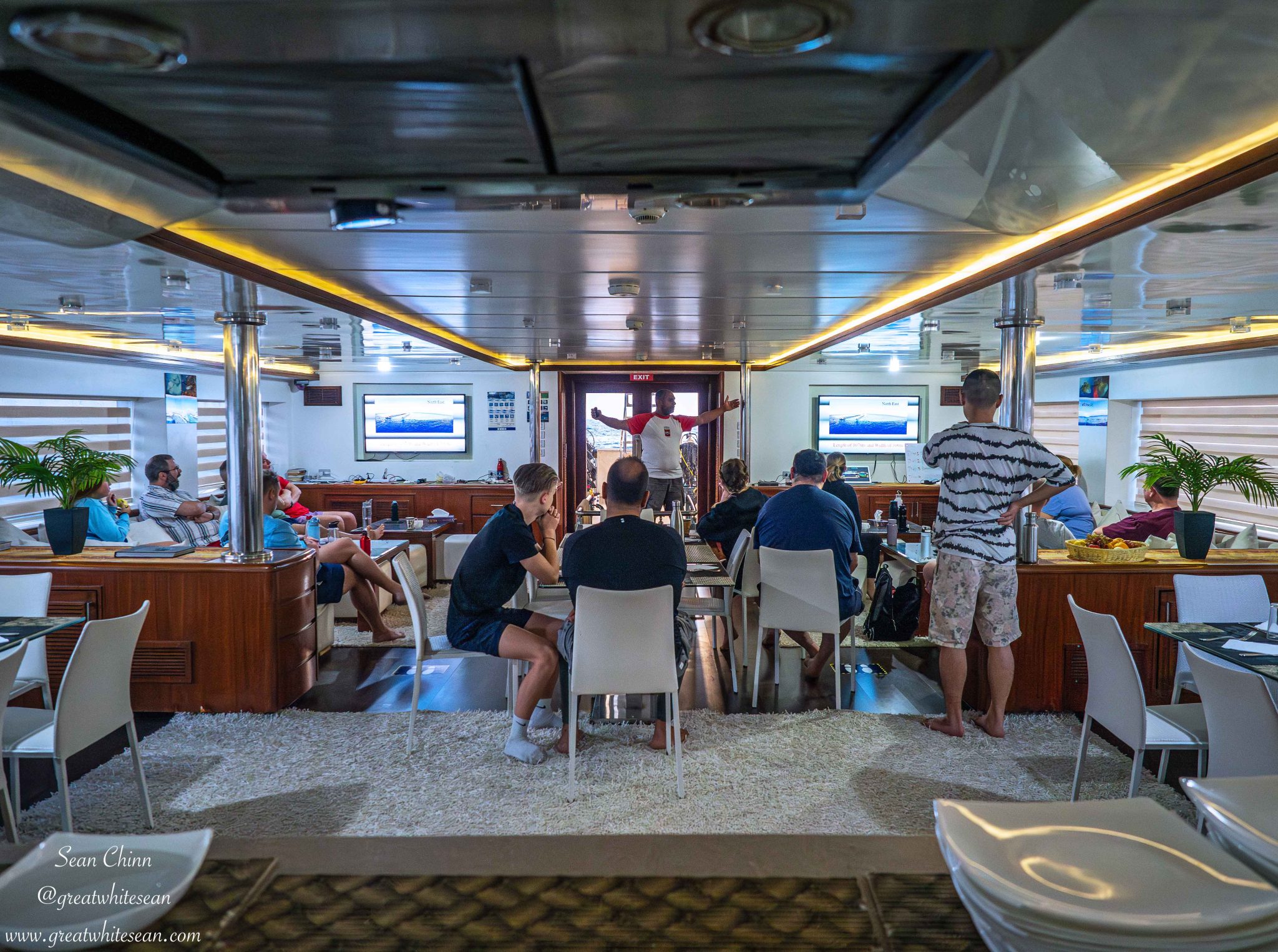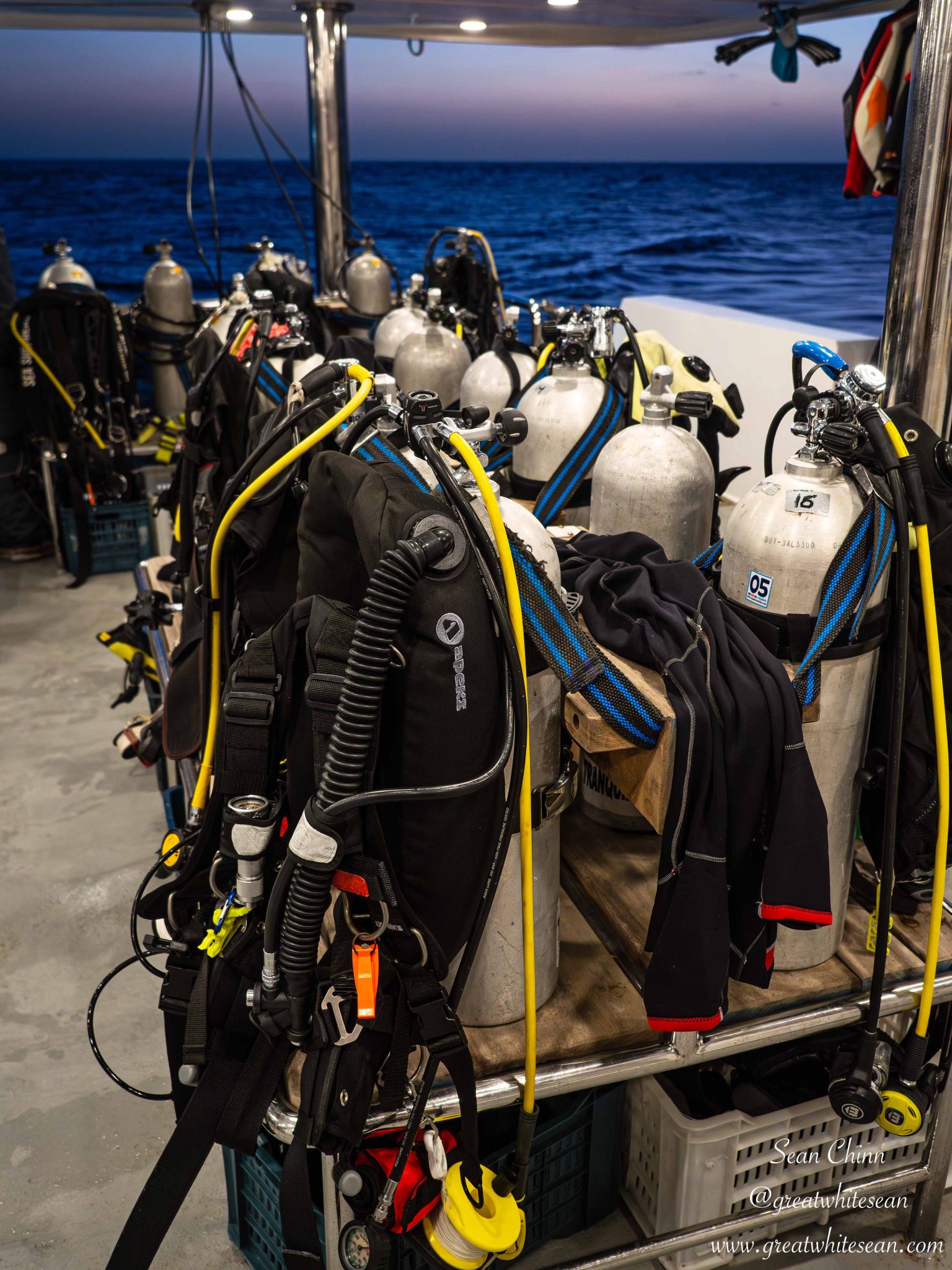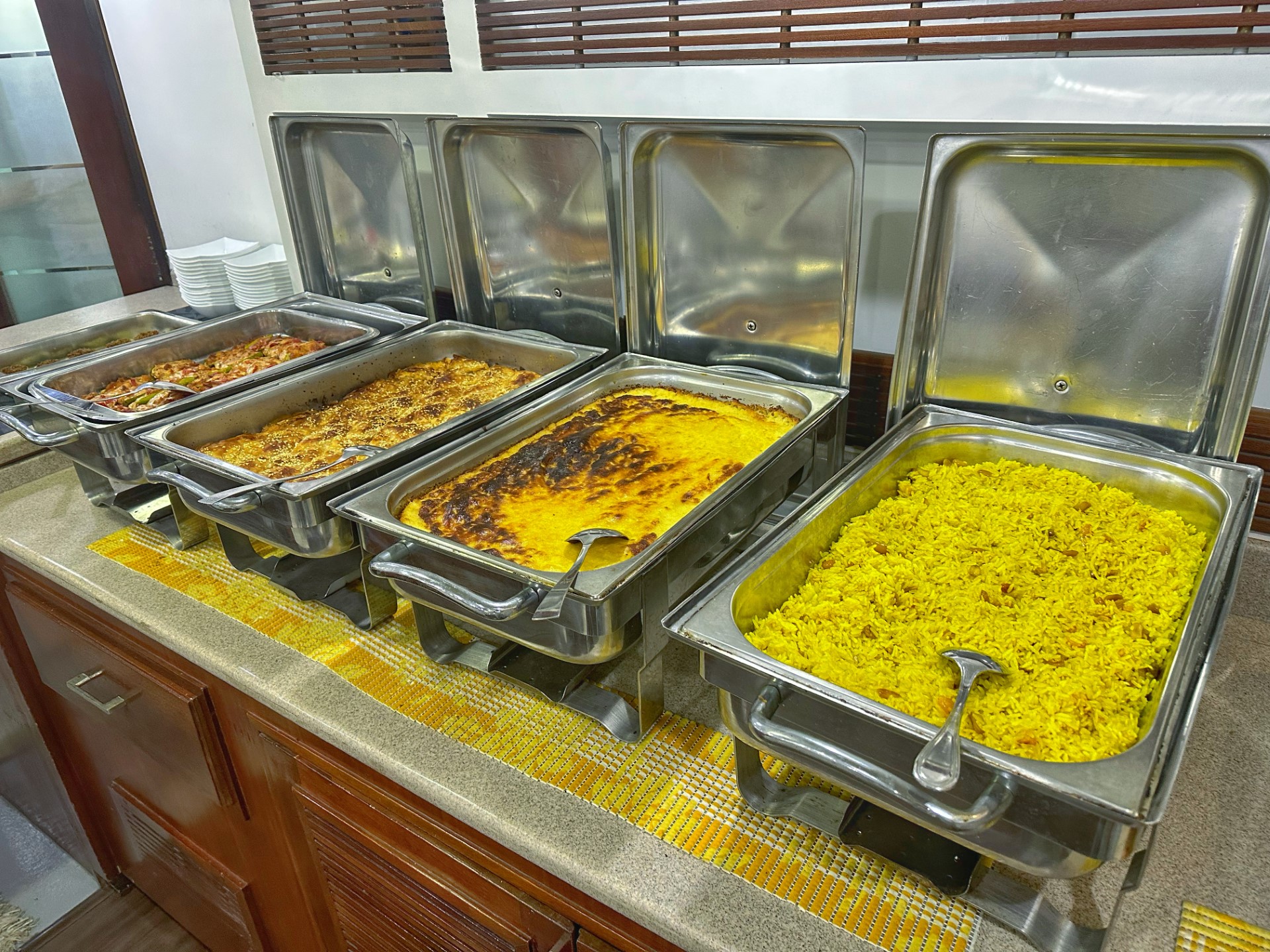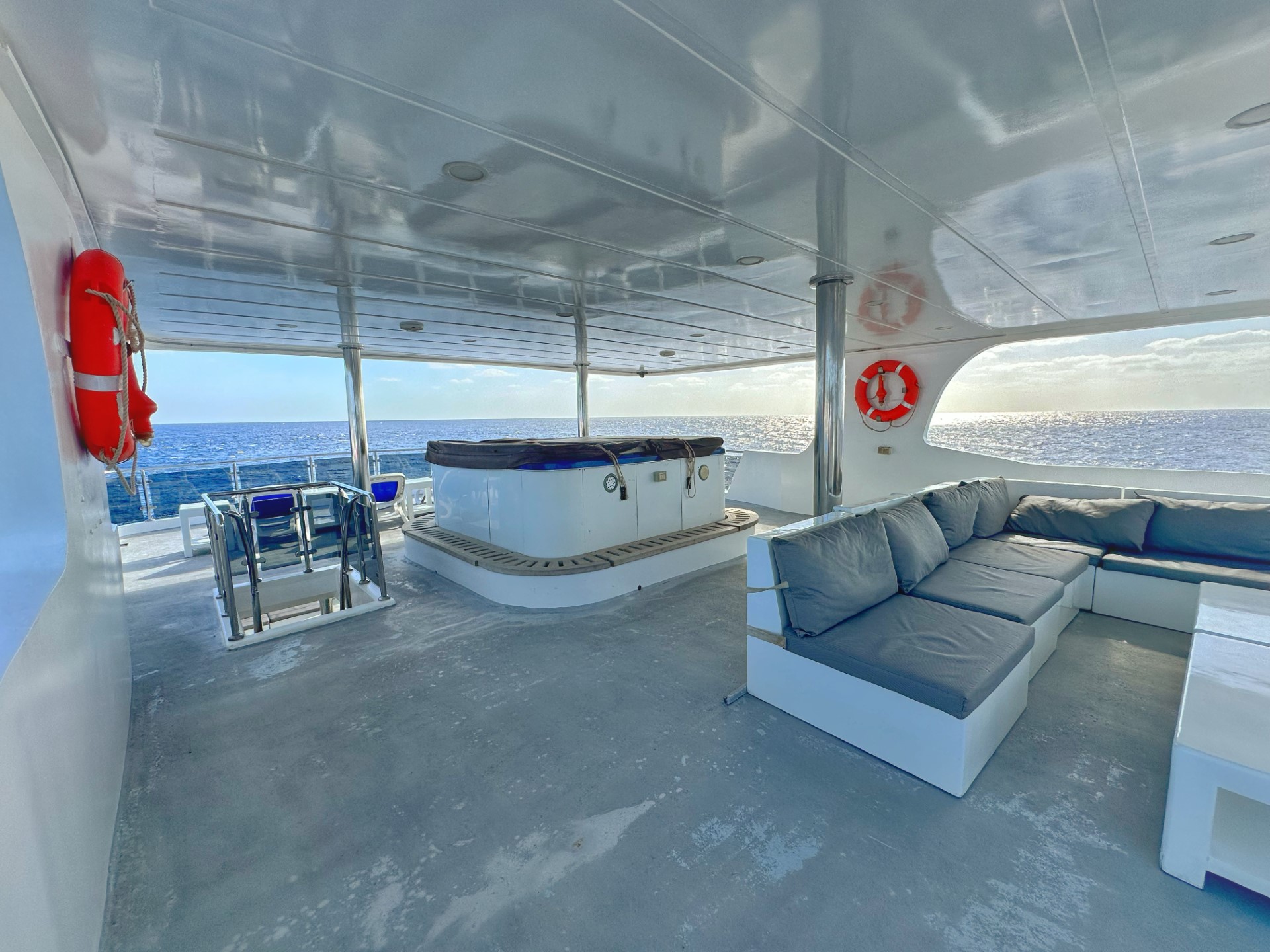Blogs
Pure Tranquility: a well needed Winter Red Sea liveaboard getaway

It’s been a quiet year for diving and underwater photography this year for me, and with a baby due early next year, it could potentially get quieter. For that reason, a dive trip before the New Year was more than welcome. After having a couple of other potential trips not come to fruition, I was definitely itching to get back underwater.
With my wife heavily pregnant, I was reluctant to look at any BIG trips that would take me to the other side of the world in remote, hard to reach places. My mind was definitely thinking Red Sea, and with this time of year being prime oceanic whitetip shark action, a “Simply the Best” itinerary to Brothers and Daedalus would be just the ticket – a quick week away, within easy reach, and with great diving. Come on scuba Gods, do me proud. Well!! They certainly did, as I got the phone call to join Scuba Travel onboard M/Y Tranquility, and on a “Simply the Best” itinerary to boot. WHAT A RESULT!!
First things first – Getting there. Travelling with Scuba Travel couldn’t be easier, and everything is planned and sorted for you. You get a special log in for your ‘manage my booking’ page on their website, allowing you to access all the details for the trip you need. There’s always someone on hand to answer questions, and they make sure to give you all the relevant information to make sure you’re ready for the trip (FCDO links, dive insurance links, safe and healthy holiday links e.t.c.). My return flights were Gatwick to Hurghada with EasyJet, and Scuba Travel can even pre-book your visa to avoid any unnecessary delays on arrival in Hurghada. A representative is there to meet you at immigration with the Visa. Return transport is also included from the airport to the boat and back, ensuring a smooth and safe journey. It wasn’t long before I was getting my first glimpse of my home for the week.
Formally Oman Aggressor, this highly comfortable boat has found a new home in the Red Sea and been renamed Tranquility. It was certainly Tranquil by name, Tranquil by nature. A beautiful big boat which was certainly at home at sea; a stunning 45m steel hulled liveaboard which was super comfortable and stable. We had strong winds for the whole week, but Tranquility’s safe, stable build meant we didn’t miss out on visiting the offshore reefs the “Simply the Best” itinerary is famous for. I also felt completely safe, even in the harshest conditions the week could throw at us, and didn’t feel sea sick once; a testament to its build quality.
If you’re familiar with joining a Red Sea liveaboard from Hurghada Marina, you’ll know that the first impression you get of the boat is the most important – the Dive Deck!! As you approach from the rear and enter the boat for the first time, your eyes are already scanning the space and equipment. Thankfully, I was super impressed with the size, and all the cylinders looked in great condition, with 2 rows of 12 cylinder spaces through the middle and 2 rows of 5 along the back edge. With camera tables either side and plenty of charging portholes, it was more than adequate to accommodate the maximum of 24 dive guests. In fact, there were 16 divers plus 3 guides on our trip and we comfortably kitted up together.
Arriving at night meant we were soon ushered into the bright and airy salon leading to the dining area. A refreshing welcome drink greeted us, and it wasn’t long before we were getting our first impressions of the food onboard. Dinner was served almost instantly and was a delicious buffet style set up with plenty of choice, from cold starters to tasty hot food and some dessert to finish up. They catered brilliantly for a number of vegetarians/pescatarians onboard also. The food continued to impress throughout the week, and the Egyptian Beef dish was incredible – so succulent, and bursting with flavour, I was glad it was served on more than one occasion.
It’s very important to me how liveaboards deal with safety onboard and how the briefings are delivered, so it was reassuring when Reda gave us the initial boat briefing and couldn’t have been more stern and thorough with the delivery. Yassir was the same when it came to dive briefings, and in particular the shark briefing. I kind of felt like a naughty school kid with how firm they were in delivering their briefings! I’m more than happy with that when it comes to safety though. I was also reassured someone would always be on hand.
Tranquility offers 12 well-appointed cabins across 3 decks, all with en-suite, media player, hairdryers and individual AC climate controls. I was in one of the lower deck cabins (Cabin 3), which was a large room, with more than adequate space for 2 people sharing on a twin cabin share. However, I lucked out on this trip with my own room to myself. Unfortunately, with everyone boarding the boat at the same time and getting in their rooms as quick as possible, I didn’t get chance to check out the master cabins on the upper deck and the suite on the main deck. However, the impression I got from those staying in them was that they were large comfortable rooms with a great view out. I’ve looked at the images online and they do look incredible.
Overall, my experience onboard was a great one and really added to the amazing diving we had. While winter does get a little more windy and chilly, it did mean the top deck was free a lot during the trip, so when I wanted to take some time to myself, I would lie on the loungers in the sun listening to music. There’s also a jacuzzi on the top deck but we didn’t use it because of the time of year. The upper deck has a comfortable seating area at the stern of the boat and is where most the socialising took place during the evenings. It was also a great place to sit and watch the sunset and the moon rise out of the sea, something I really enjoy on a Red Sea liveaboard.
With 2 large screen TV’s in the salon and comfortable seating, I really enjoyed the few nights we were able to get a film on and relax. With a last day’s stay at Blue Beach Club in the Marina which also included with a Scuba Travel trip, it was nice to relax before our 6pm pick-up for our flight home.
My home for the week was way more than adequate, with some great company onboard. Stay tuned to see what the diving had to offer in my upcoming blogs…….
For more information about Tranquility and diving in the Red Sea:
+44 (0)1483 411590
Blogs
Alonissos: The complete diving destination (Part 1)

In June we were incredibly fortunate to be invited to dive in Alonissos, a small Greek Island in the Sporades island chain located in the North Aegean Sea. While I have long been a big fan of the Greek Islands as a great holiday destination, I had not had the opportunity to do any diving on previous visits and Mike and I were extremely excited to see what Alonissos had to offer both above and below the surface!

The Sporades are easily accessible via the airport in Skiathos (the first island in the chain), which is served by Jet2 flights from all major UK airports from May through October. Numerous ferries and charter boats make island hopping from Skiathos Town a breeze. After an hour boat ride, the picturesque port of Patitiri was a wonderful introduction to Alonissos, where we were met by our gracious hosts Kostas of Albedo Travel and Dias of Alonissos Triton Dive Center. Mike and I were delighted to be staying at the Paradise Hotel, aptly named for its stunning views over the sea and great location for walking to the waterfront.

Alonissos is beautifully situated in the National Marine Park of Alonissos and the Northern Sporades, the largest marine protected area in Europe. The surrounding seas offer fabulous marine life, including incredibly rare species such as the Mediterranean monk seal. They boast deep walls covered in gorgonians and sponges, stunning topography with caverns, swimthroughs and pinnacles, and the first accessible ancient shipwreck from 500BC!

In locations where historical sites have been reported, the waters are largely restricted, but with collaboration between government, underwater archeologists and dive centres, incredible underwater museums are being created for a truly unique diving experience. Alonissos is home to the first of these, the Ancient Shipwreck of Peristera Accessible Underwater Archeological Site. The chance to dive into history (along with reports of healthy reef life and amazing underwater topography) meant Mike and I were keen to get in the water.

Our introduction to the diving around Alonissos was at the Agios Georgios Pinnacles, in the channel between Alonissos and Skopelos. This fantastic site was named “The Chimney,’ and proved to have a huge amount to see. We got to a decent depth here (over 25m), and marvelled at a colourful reef wall with a wonderful swim through whose rocky walls were absolutely covered with life. As well as brilliant topography there was no shortage of macro life here. We saw numerous nudibranchs, five different species in total. The second dive at Mourtias reef nearby was a shallower dive along a nice wall with lots of crevices. Several moray eels and grouper called this site home. We enjoyed looking in the crevices for lobster and smaller benthic life, such as cup corals and tunicates.

Our itinerary allowed us two dives a day with afternoons left to explore the island with our hire car and evenings to enjoy the famous Greek hospitality. This proved to be a lovely mix of in-water and land based diversions.

The next days diving to the Gorgonian Gardens and Triton’s Cave was to be even better! These two stunning sites are nothing short of fabulous. The Gorgonian Gardens was a deep wall near to the Agios Georgios islands. The ever-present currents in this deep channel meant that the sea life was amazing … the namesake Gorgonian sea fans dotted the wall at a depth of 30 to 50 meters, getting ever larger the deeper we went. Above 30m was by no means less beautiful, with sponges, corals, scorpionfish, moray eels and some rare and colourful nudibranchs.

The second shallower dive of the day was to Triton’s Cave or the Cavern of Skopelos, on the east side of that island. The spectacular rock formations had wild striations both above and below the water making a truly epic topography. The cavern entrance was at 14m, and big enough for a buddy pair, winding up to 6m and passing two beautiful windows out into the blue. Emerging from the cavern, the light at the shallower depths and the incredible rock formations made for a fantastic gentle swimming safety stop and we all surfaced by the boat with massive grins.

Check out our next blog :Alonissos: The complete diving destination (Part 2)” to hear about our amazing dive on the 2500 year old Peristera Wreck!
Thanks to:
Alonissos Triton Dive Center https://bestdivingingreece.com/
Albedo Travel https://alonissosholidays.com/activities/
Paradise Hotel https://paradise-hotel.gr/
Alonissos Municipality https://alonissos.gr/en/
Blogs
Mamma Mia! Diving Skopelos (Part 2)

Our second days dive itinerary was to the famous Christoforos wreck! This is arguably the best dive in Skopelos and though only open to divers with deep diving experience, this 83m long wreck is well worth the visit.
The Christoforos sits in 43 meters of water with the deck at 32 to 35 meters. A 30m dive can give an impressive view of the wreck, though such a large wreck needs a few dives to truly do it justice. Given its ideal location just a 2 minute boat ride from the dive centre dock it is an excellent first dive of the day. The sheltered site is also diveable in all but the absolute worst weather so although deep, the water is usually clear with little to no current making it a very pleasant dive. The site is superb for technical diving and a great training site for the Tec 40 and 45 programs, offered by Skopelos Dive Center.

The Christoforos wreck was originally a collier ship built in 1950 at Grangemouth shipyard under the name “Thomas Hardie”. In 1976 she joined the Greek merchant fleet as “Christoforos”. On the 2nd of October 1983 the Christoforos was carrying 2600 tonnes of cement from Volos to Piraeus Port. During the voyage the weather turned, resulting in the ship developing a 7 degree list, whereby she changed course for safe anchorage at Panormos, Skopelos. The ship reached Panormos at 16:00 with a list of 17 degrees and water ingress to No. 1 hull. Though attempts were made to right the vessel, the crew were ordered to abandon ship at 22:00. The captain, lieutenant and the quartermaster remained to try and save the ship, but had to abandon the attempt themselves and the Christoforos finally sank at 05:30 on 3rd October 1983. She now sits upright in 43 meters of water less than 200m from shore in Panormos.

Diving has only been allowed here since 2018, so the wreck is very well preserved and a real treat to dive. Permission to dive here was granted by the authorities after lots of incredibly hard work by the Skopelos Dive Center staff. Having a fantastic wreck in such an amazing location and in excellent condition is a real privilege.

Of all the sites in Skopelos this was the site Mike and I were most keen to experience. Having kitted up and zipped across the bay to the mooring, we left the surface and followed the descent line until the wreck emerged spectacularly from the blue at 15m. She is a big and beautiful wreck, sitting as though calmly continuing her journey along the seabed. With most of her original features still intact there were points of interest everywhere, including the anchors, winches, ships telegraphs, the wheel and RDF antenna.

We found that aquatic life had colonised the ship, with schools of fish, electric blue nudibranchs, a large moray eel and the resident scorpionfish lurking inside the bridge. The Christoforos was truly a stunning wreck and despite maximising our time at depth we eventually had to say our goodbyes and begin the slow and steady return to the surface.

After a superb morning dive we had the afternoon to do a little sightseeing of the island, with a trip to the church of Agios Ioannis Kastri made famous by the blockbuster movie “Mamma Mia!”. Mike and I spent a happy afternoon pootling around in our little hire car before meeting up with Lina from Skopelos Dive Center. An underwater archeologist as well as a dive professional, Lina had offered to show us a rather special attraction, the Christoforos shipwreck Digital Spot public information and awareness centre.

A fantastic initiative made possible from the collaboration of the government and hard work of the staff at Skopelos Dive Center is the “Digital Spot” in Agnontas port. This information center has a number of displays on the history of the Christoforos wreck, the process by which the wreck was allowed to be opened to the public for diving tourism, other sites of historical interest in the area, a video of the wreck and the best bit, a virtual reality dry dive experience! The beauty of the VR system is that non diving members of the family can see what you have seen on the wreck, or you can see areas that you may not have explored during the dive due to time or depth limitations. It was a truly immersive experience and a great addition to the dive itself.

After a wonderful day we celebrated our last evening on the island with an exquisite meal in Skopelos Town with fabulous views over the town and bay, washed down with the excellent local wine. The lamb with lemon and potatoes was a meal which I could happily eat every day for the rest of my life!

Skopelos is an island that truly has it all. The diving is excellent, the landscape is beautiful with plenty of non diving activities, the locals friendly and the food and drink superb. Given how accessible it is as a holiday destination it has avoided becoming overcrowded and even in peak season offers a fun yet relaxing atmosphere. We highly recommend giving Skopelos a visit. We will certainly be back again!
Thanks to:
Municipality of Skopelos (https://skopelos.com/)
Skopelos Dive Center (https://sporadesdiving.gr/)
Ionia Hotel (https://www.ioniahotel.gr/en)
Dolphin of Skopelos (https://dolphinofskopelos.com/)
Ta Kymata restaurant (@takymata)
The Muses restaurant (https://www.facebook.com/TheMussesMousses/)
Aktaiov resturant (https://skopelos.com/listings/aktaion-taverna/)
-

 Blogs2 months ago
Blogs2 months agoDiving With… Nico, Ocean Earth Travels, Indonesia
-

 News1 month ago
News1 month agoMurex Bangka Announce New Oceanfront Cottages & Beachfront Dining
-

 Blogs2 months ago
Blogs2 months agoA new idea in freediving from RAID
-

 Marine Life & Conservation1 month ago
Marine Life & Conservation1 month agoIceland issue millionaire whale hunter a licence to murder 128 vulnerable fin whales
-

 Marine Life & Conservation2 months ago
Marine Life & Conservation2 months agoThe Shark Trust Great Shark Snapshot is back
-
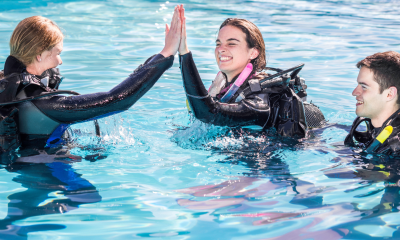
 News3 months ago
News3 months agoCharting New Waters; NovoScuba Goes Global with the Launch of their Revolutionary Dive Training Agency!
-

 Gear News1 month ago
Gear News1 month agoNew Suunto Ocean – a dive computer and GPS sports watch in one for adventures below and above the surface
-

 Marine Life & Conservation Blogs2 months ago
Marine Life & Conservation Blogs2 months agoBook Review: Plankton


